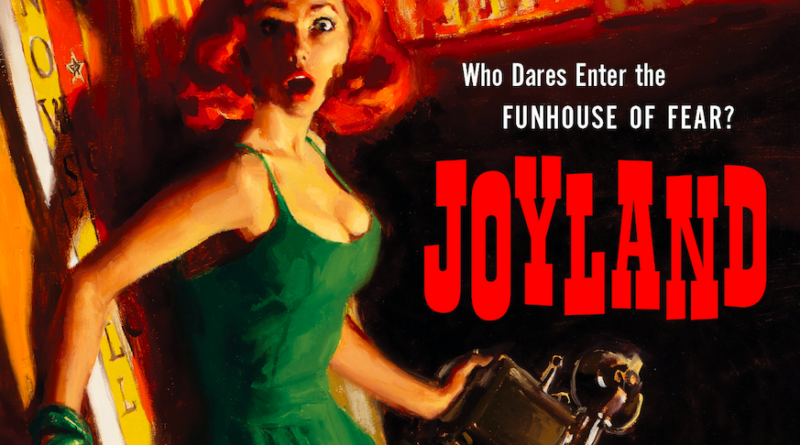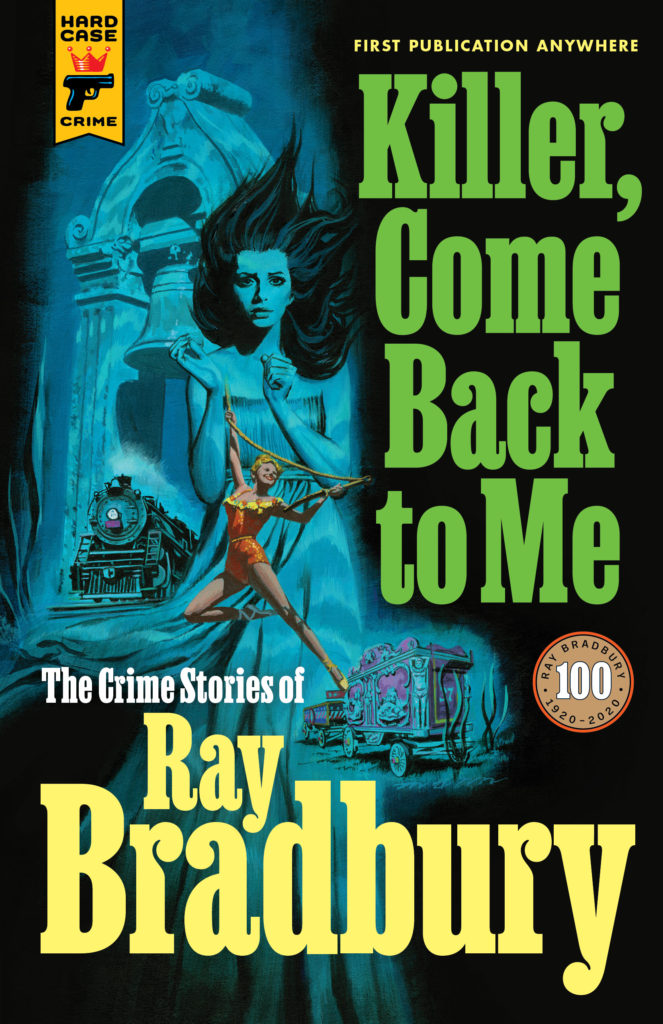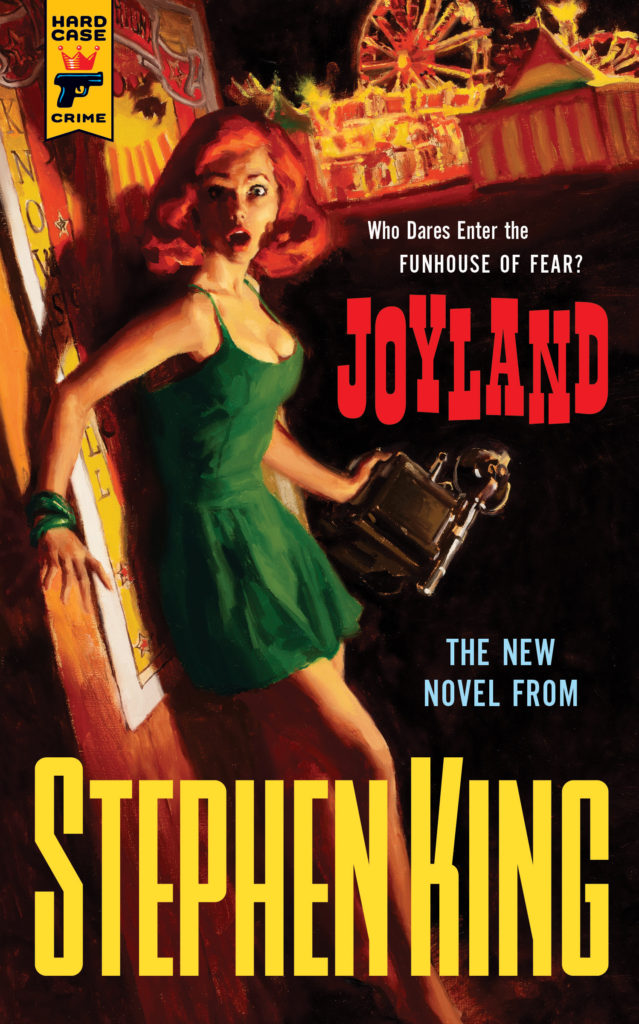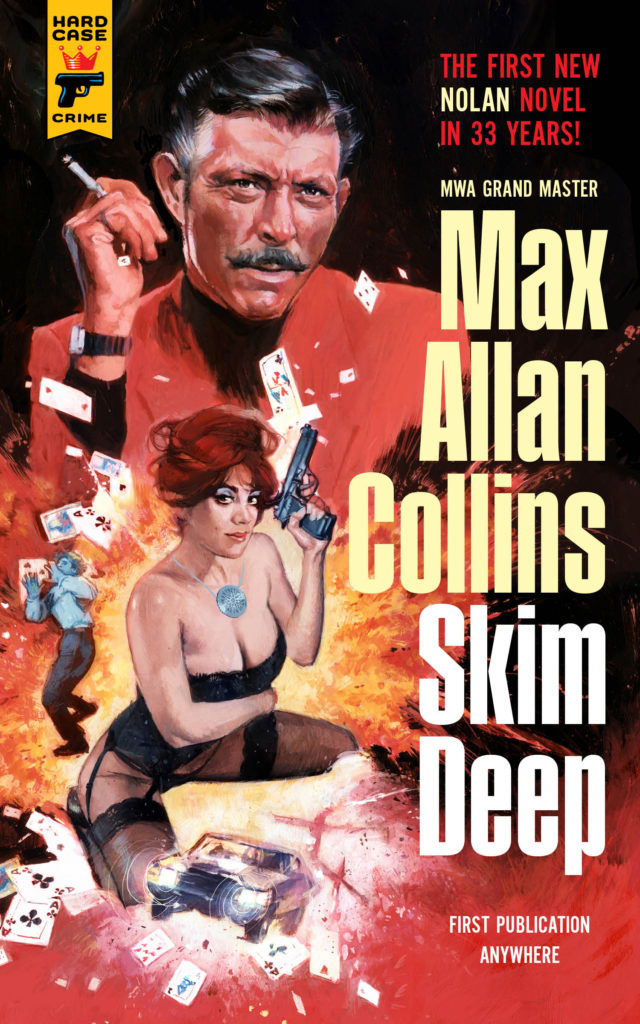INTERVIEW: Hard Case Crime publishes books dripping with pulpiness
Image courtesy of Hard Case Crime / Provided with permission.
The paperback crime novels of the mid-20th century have made a resurgence in recent years thanks to the publishing imprint Hard Case Crime, which celebrates the golden age of the paperback by reviving classic texts and commissioning beloved writers to spin new yarns. Their authors over the years have included everyone from Max Allan Collins to Stephen King to Lawrence Block to Ed McBain. This summer they are releasing Killer, Come Back to Me by Ray Bradbury, a collection of crime stories that honors the author’s centennial. Also on the horizon is Collins’ first Nolan mystery in 33 years (Skim Deep, coming in November).
The man behind the plan is Charles Ardai, editor of Hard Case Crime and an author himself. The company has published his books The Nice Guys, an adaptation, in May 2016; Fifty-to-One in December 2008; Songs of Innocence in July 2007; and Little Girl Lost in October 2004.
Recently Ardai traded emails with Hollywood Soapbox and answered questions on all things pulp fiction. Questions and answers have been slightly modified for style.
What was the initial inspiration to found Hard Case Crime? Did you feel this type of fiction needed more prominence?
My friend Max Phillips and I went out drinking one night after finishing up another project and asked each other what we might want to do next. We were both fans of the great old paperback crime novels of the 1940s and ’50s, with their gorgeous painted covers and high-velocity storytelling, and we were lamenting the fact that we’d both been born too late to write books like that for long-gone imprints like Gold Medal or Popular Library. At one point we asked each other, ‘Why don’t we create a new imprint of our own? One that looks just like those great old books we love?’ And that’s where Hard Case Crime came from.
How has the company changed over the past 15+ years? Why did you decide to move away from the mail-order model?
When we launched the imprint, we thought we might only publish six books and call it quits — we didn’t know if anyone else had the slightest interest in these sorts of books. But those first six did well, so we did another six, and another, and here we are now, more than a decade later, with a list that’s more than 100 books strong, still at it.
There have been changes: our first 66 books were all printed in the classic pocket-sized paperback format called ‘mass-market paperback,’ but since 2010 we’ve switched to doing the more modern, larger ‘trade’ paperback size (and occasional hardcovers). The art is larger, type is larger, and for various technical reasons it’s more financially viable. Otherwise the line hasn’t changed much — we still publish the sort of book we love to read, with the sort of cover art we love to look at!
In terms of mail order, we did offer a subscription service between 2005 and 2010, but had to shut it down when the company we were working with to print and distribute our books went out of business. None of the publishers who offered to replace them had the capability of offering that sort of direct-to-readers subscription service, so we had to give it up. But we might have had to anyway, since we’re no longer publishing a new book every month like clockwork, and the books we are publishing no longer are all in the same format, and at the same price, every month. A subscription really needs to be predictable in that way. But of course our not offering a monthly subscription doesn’t mean people can’t get our books sent to them by mail order — the simplest thing in the world is to pre-order them on Amazon and they’ll show up in your mailbox.
How have you built relationships with these authors and the rights holders of these books?
Sometimes it has required a lot of detective work, when we’ve wanted to publish a book by a long-dead author and no one knows who or where his heirs might be. In one case the author was dead, the author’s son was dead, the author’s son’s widow was dead, the author’s literary agent was dead. We finally located the widow’s son! And so we were able to proceed. But in other cases it’s much simpler: an author is alive, we reach out either directly or through their agent, they see our books and like what they see, and we reach an agreement. And if the first book we do with someone goes well, we might come back and do a second, a third, a fourth. We’ve published a dozen books with Lawrence Block, something like 20 with Max Allan Collins. It’s easy to form a relationship with someone who loves the same things you do.
This August, you will be showcasing Ray Bradbury for the first time. What do you love about his stories?
Like everyone else in the world, probably, I first read Ray Bradbury’s stories in school, and I fell in love with them. Unsettling, lyrical, dark stories like ‘The Veldt’ are classics and compulsory reading, and everyone knows them. But the man wrote literally hundreds of stories, maybe thousands, and not all of them are so well known. And he’s much better known for his fantasy stories than for crime fiction — but he wrote plenty of both. So we had the idea of celebrating his 100th birthday, which is this August, by curating the definitive collection of Ray Bradbury’s crime fiction. That’s what Killer, Come Back to Me is, and it’s truly an honor to publish it. No one else ever wrote like Bradbury — his prose has the feel of poetry, his turns of phrase are magical, his ideas are ingenious, his characters spring to life. It’s wonderful to see a writer of that caliber turn his hand to this genre.
Later this year, you will feature Max Allan Collins’ first new Nolan novel in 33 years. Are you excited for that one?
Very much so. Max started writing about Nolan — his veteran heist artist — in the late ’60s, and published the seven Nolan novels in the ’70s and ’80s. It’s been three decades since there was a new one, and fans of the series have been waiting an awfully long time to find out what’s been happening with Nolan, his frequent partner Jon, his girlfriend Sherry, and his antagonists, the criminal Comfort family. Skim Deep acts as a sort of coda for the whole series and will definitely bring smiles to lots of longtime readers. And what about new readers? Well, anyone who starts with Skim Deep and wants more is in luck, since we’re going to be reissuing all the earlier Nolan novels, so they can catch up on everything they missed.
Has Stephen King’s The Colorado Kid been the best-selling title of the series?
Close: it’s the second-best. Stephen King’s Joyland is #1. It’s not really surprising that those two would be our top-selling titles — Stephen King is the best-selling author in the world, with more than 350 million books in print. He has so many millions of fans who want to read whatever he writes next. We were honored when he volunteered to write a book for us back in 2005 and doubly so when he decided to come back and do it again in 2013. The Colorado Kid really put Hard Case Crime on the map, and the sales of his two books have helped underwrite the publishing of so many other books by less-well-known authors who deserve to have their books read. We’re profoundly grateful to Stephen King for helping us in that way.
Was it particularly satisfying to have your own novels printed?
Yes, of course! Remember, the original idea behind launching Hard Case Crime was in part that Max and I wish we could’ve written for imprints like Gold Medal and Popular Library. Once we’d created our own imprint, writing at least one book apiece for it was a must. Max wrote Fade to Blonde, which won the Shamus Award for Best Private Eye Paperback, and I wrote Little Girl Lost under the pseudonym ‘Richard Aleas,’ and Little Girl Lost went on to be nominated for both the Shamus and the Edgar Award.
I had so much fun writing that one that I wrote a sequel, Songs of Innocence, which won the Shamus Award in its year, and then one under my real name, Fifty-to-One, which was a special commemorative novel to celebrate our having 50 books under our belt. Years later, I also wrote the novelization of Shane Black’s movie The Nice Guys, which we published, so really it’s four books — but I can only take partial credit for The Nice Guys. It’s more Shane’s creation than mine.
The cover art is so fitting for this genre. Where did the idea come about to have these pulp-like paintings grace the covers?
Oh, that was an important part of the concept right from the start. At that very first session over drinks, the idea was to publish books that read and looked like the paperbacks of the 1940s and ’50s. We were very lucky to find some painters from that era still working, like the magnificent Robert McGinnis, and also to find some younger painters who were able to work in the old style, such as Glen Orbik and Greg Manchess and Paul Mann. Every book we publish features a new cover painting done just for us, and lots of people have told us that the covers are a big part of the reason they buy our books. They say you shouldn’t judge a book by its cover — but in our case, it’s OK to make an exception.
By John Soltes / Publisher / John@HollywoodSoapbox.com
Click here for more information on Hard Case Crime.




